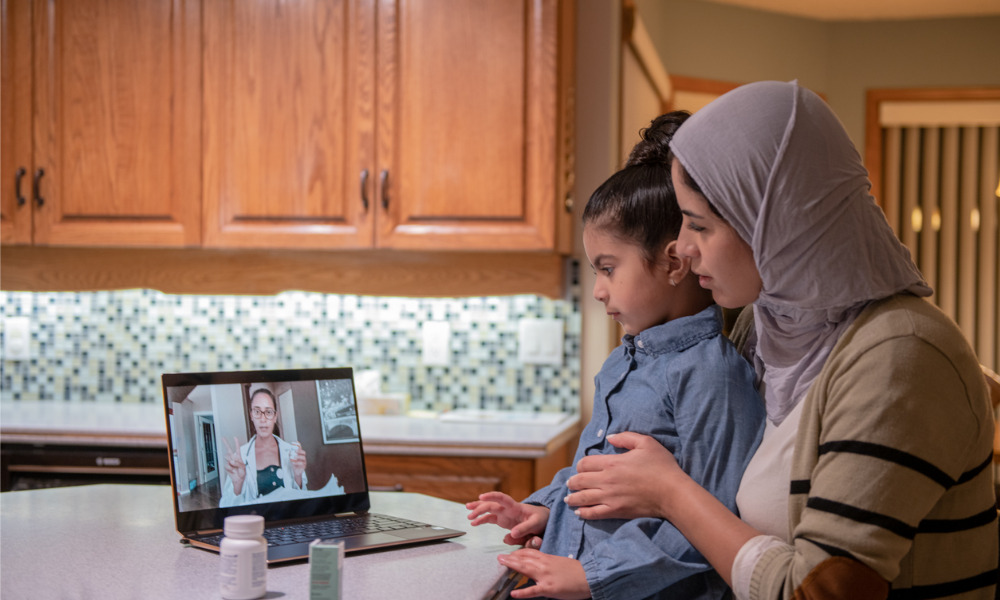‘For people that have disabilities or are frail, a phone call or video can be a lot easier and safer for them to get to the doctor’s office’

The popularity of virtual health care has become more apparent during the many months of the pandemic, especially for those who have cardiac conditions, according to a new survey.
More than eight and 10 people living with a heart condition or stroke reported having a virtual healthcare appointment during the pandemic, says Natalie Gierman, senior manager of health systems and research at the Heart and Stroke Foundation of Canada in Toronto.
“A large majority of people were utilizing this fairly new way of communicating with their health-care provider and that’s an increase actually from a survey that we did [previously] where just over half had a virtual care appointment.”
The organization surveyed 3,016 people who have a heart condition, stroke or vascular cognitive impairment, as well as caregivers, between March 23 and 26, and also compared this with a similar questionnaire in May 2020.
“At the beginning of the pandemic, there was a bit of a scramble to get virtual care set up. Physicians were still trying to figure out what technology to use and how to make sure there was privacy but as we moved into the third wave of the pandemic, it was really being utilized across the board by a vast majority of people,” she says.
In a recent HR roundtable, Canadian HR Reporter spoke with three powerhouse professionals for a discussion on the latest developments in employee health benefits.
Low-tech options
But for those folks employing virtual care, it’s not necessarily apps and video-conferencing, but low-tech means, which might surprise some, says Gierman.
“Eighty-one per cent of people that utilize virtual care use the phone appointment; and then the other technologies used were video calls and then text or email. When people think of virtual care, they often associate it with pretty advanced technology like apps and Zoom, video conferencing, but the majority of appointments actually continue to be by phone.”
And there were very few technological difficulties reported by respondents, she says.
“Over half of the people felt competent or pretty competent using technology for a health-care visit, with fewer than one in 10, indicating they didn’t feel competent. Also, a majority of them use the technology pretty regularly so seven in 10 use a landline, which is the majority of virtual-care appointments, and many of them also had access to computers and tablets and cellphones and felt very comfortable using them.”
Advantages to virtual format
For those with heart conditions, the use of virtual health-care is important, she says.
“Many of them chose virtual care just because they were nervous about going to the hospital or going to the doctor’s office, afraid of having contact with COVID-19. For people that have disabilities or are frail, a phone call or video can be a lot easier and safer for them to get to the doctor’s office.”

Natalie Gierman
The financial savings of using virtual care is also becoming more apparent, says Gierman.
“There’s a lot of costs that are incurred with going to physician appointments, especially for people that are living with cardiac and stroke conditions and have to go fairly often. It can really reduce… travel time, daycare costs, lost wages due to taking time off work as well.”
And patients in the survey were generally happy with their experience, says Gierman, “which I think speaks to the competency of the healthcare providers we have in our system. [Patients] definitely felt like it was a lot easier to connect, not having to travel.”
Eighty per cent of Canadians say their employer should provide access to virtual care or telemedicine, according to a survey released by Dialogue.
More investment needed
But for virtual usage to become more available, governments must step up the plate, she says.
“There’s a lot of people living in northern or remote communities that do not have broadband internet access and do not have the infrastructure to even support virtual care. That’s a really big issue in Canada that is currently being addressed by both federal and provincial governments to make sure that they have access. There’s also issues with the cost of internet access so there should be subsidization programs that help people with those costs, provision of computers and devices for lower socioeconomic populations. Not everyone has access to a tablet or a laptop,” says Gierman.
Funding and programs must be implemented, according to Gierman, because “Canada lags behind a lot of other developed countries, such as Sweden and the U.K., in terms of virtual healthcare utilization but also even electronic medical records, systems, design, telecommunications, infrastructure. We also really need investments in monitoring, evaluating and research that helps us really understand and improve virtual healthcare services.”
But virtual healthcare is not going away anytime soon, she says.
“It’s going to be an amazing tool in our toolbox and it’ll help improve access to services. It’s definitely going to be part of our health system moving forward.”




